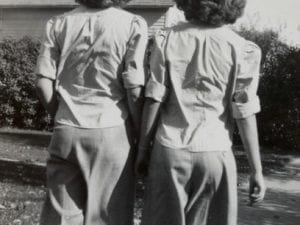There’s a saying in the Arab world: “books are written in Cairo, printed in Beirut, and read in Baghdad.” It speaks of a strong cultural connection, and of a conscious engagement with the creation and consumption of texts. In what is likely the largest ever solo exhibition by an Arab artist, Doha’s Mathaf and Al Riwaq museums are welcoming over 400 works by Iraqi artist Dia Al-Azzawi, whose deep and thoughtful engagement with his culture, its history, and its texts has produced an extraordinary body of work over half a century.
Having trained as an archaeologist in Baghdad during the early sixties whilst simultaneously studying art, Azzawi’s work has a dual heritage. He was inspired and mentored by the so-called father of modern Iraqi art, Jawad Selim, and took much from his predecessor’s efforts to develop a distinct modern style that drew from both traditional and ancient forms. So it is that many paintings display figures bearing the eyes and faces of Sumerian statues alongside compositional and decorative elements familiar from illustrated manuscripts and traditional crafts.
However, the artist was of a different generation to Selim, less concerned with the development of a national style as with seeking new means of expression to address a changing political landscape. He became great friends with the iconic poet Muzaffar al-Nawwab, who influenced him both politically and aesthetically, and began a lifelong interest in the relationship between text and image. In addition to paintings, wooden objects, and sculpture, for example, the exhibition includes dafatir: books whose decoration and structure inform and are informed by the reading of the poetry they contain.
Many of the pieces on display are inspired by texts, and from all of them Azzawi extracts something universal: through the Akkadian Epic of Gilgamesh he explores the fear of death; an illustration from the One Thousand and One Nights etched into zinc captures the wit and erudition of Scheherazade in the single masterful line of her wry smile; the Nawwab-inspired Drawings Consecrated to Love (1972) captures a dreamy tenderness reminiscent of Chagall or Klimt. No matter the text’s cultural or linguistic origins, the artist practices the interpretive art for which his countrymen are reputed: he reads, drawing the human from the historical.
The work shares much with European modernism, and while Azzawi acknowledges certain influences there is more than one way to such an aesthetic. The simplified figures and decorative elements mentioned above, for instance, are as familiar to Mesopotamian art and the illumination of Islamic manuscripts as they are to modern Europe.
The psychology of modern art may also arise by other means. Following military service where he was forced to oppose Peshmerga fighters whom he considered friends, Azzawi created the gouaches and paintings of Human States, whose figures fold into barely human and all-too-human forms, recalling Francis Bacon and yet born of a distinct trauma.
Following this experience, he left Iraq for good, settling in London where his work would become increasingly political in response to events back in the Middle East. Key among these artistic responses, the harrowing Sabra and Shatila Massacre –painted in 1983 and acquired by Tate Modern in 2012 – evokes in its mangled human forms all the chaos and horror of Picasso’s Guernica or Goya’s war sketches. Though deeply political, these works appear less an expression of anger as of the Iraqi idea of tragedy (masaa’), which is distinct from the European, Aristotelian conception in its focus on speaking truth to injustice.
Myriad such tragedies, from Jordan’s Black September to the siege of the Tel al-Zaatar refugee camp, and of course the two Gulf Wars, have provoked moving pieces and influenced the development of a painterly grammar. The keffiyeh, for example, becomes an important symbol, and the often-vague backgrounds on which figures are painted simultaneously suggest the liminality of exile and the uncertainty of living on disputed territory.
More recently, the scale of Azzawi’s response to the American invasion of Iraq sought to match the scale of the tragedy. Mission of Destruction (2004-2007) was begun without preliminary sketches or set dimensions. Its depiction of angular soldiers, melded with their ordnance and firing into a mess of abstracted Iraqi bodies, addresses the dis-proportionality of the event in dusty greys reminiscent of contemporary news footage.
Dealing with a long and prolific career, this retrospective benefits enormously from the curatorial approach of Catherine David, deputy director of the Musée National d’Art Moderne at the Centre Pompidou, who focuses a largely political body of work into something as effective to the eye as it is to the conscience. It represents a life spent reading in its best sense: teasing truth from poems ancient and new, from the testimony of atrocities, from wars in an old home viewed from a new one. As with all attentive reading, of course, over the years Azzawi has come to tell a story of his own, and it demands to be read, to be voiced.
Ned Carter Miles
Find out more about the exhibition and the artist: www.qm.org.qa
Credits:
1. Dia Al-Azzawi, Human States (1975).





